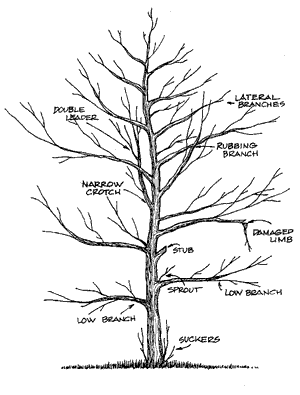 |
“Improper pruning may be the greatest single cause of tree problems in the home landscape,” Dr. Alex Shigo, a noted authority on tree biology and care says. "When you remove a branch, the tree must defend an open wound. If you prune properly, the tree can readily cope with the injury. If you prune improperly, you threaten the tree's health."
Pruning is selectively cutting parts from a plant—twigs, shoots, branches, or major limbs—to shape it, to remove dead or defective growth, to eliminate a safety hazard, or to stimulate desirable growth. While clipping, pinching or snipping the occasional stem from any plant is “pruning”, when this is done on substantial woody plants such as trees and shrubs, it significantly affects their appearance and health for many years.
Many pest and disease problems start with an injury caused by improper pruning practices:
Overpruning weakens trees, causing stress which makes them vulnerable to pest attacks on their bark and foliage.
Incorrect pruning cuts allow insects and disease to enter the tree and damage its interior.
Correct pruning bolsters tree health and vigor. Young trees can be trained to grow strong and some injuries can be corrected.
A few basic principles and sharp pruning tools assure that you can easily and safely prune small, younger trees. However, pruning trees more than 15 feet high is a dangerous job that is best left to professional tree care specialists, or arborists.
Click here for more information on Pruning_Conifers .

